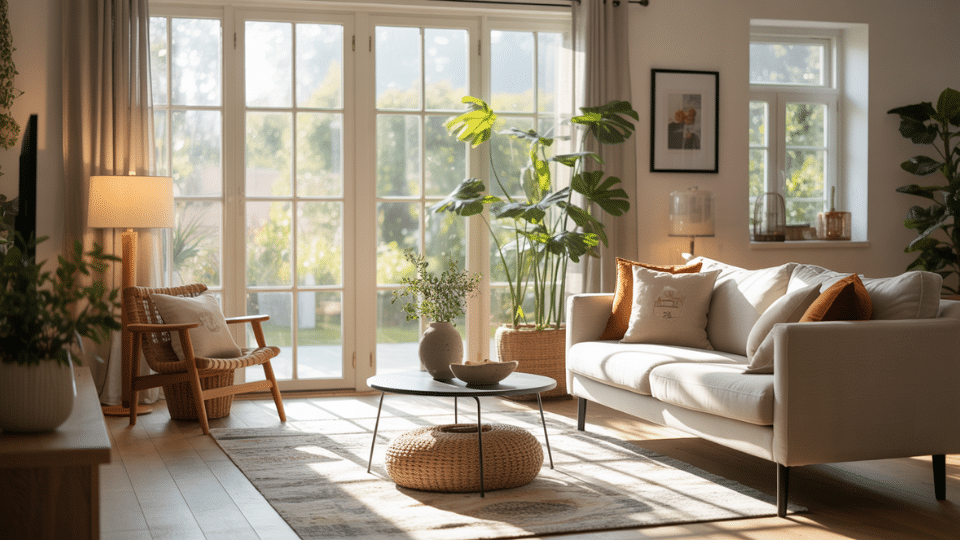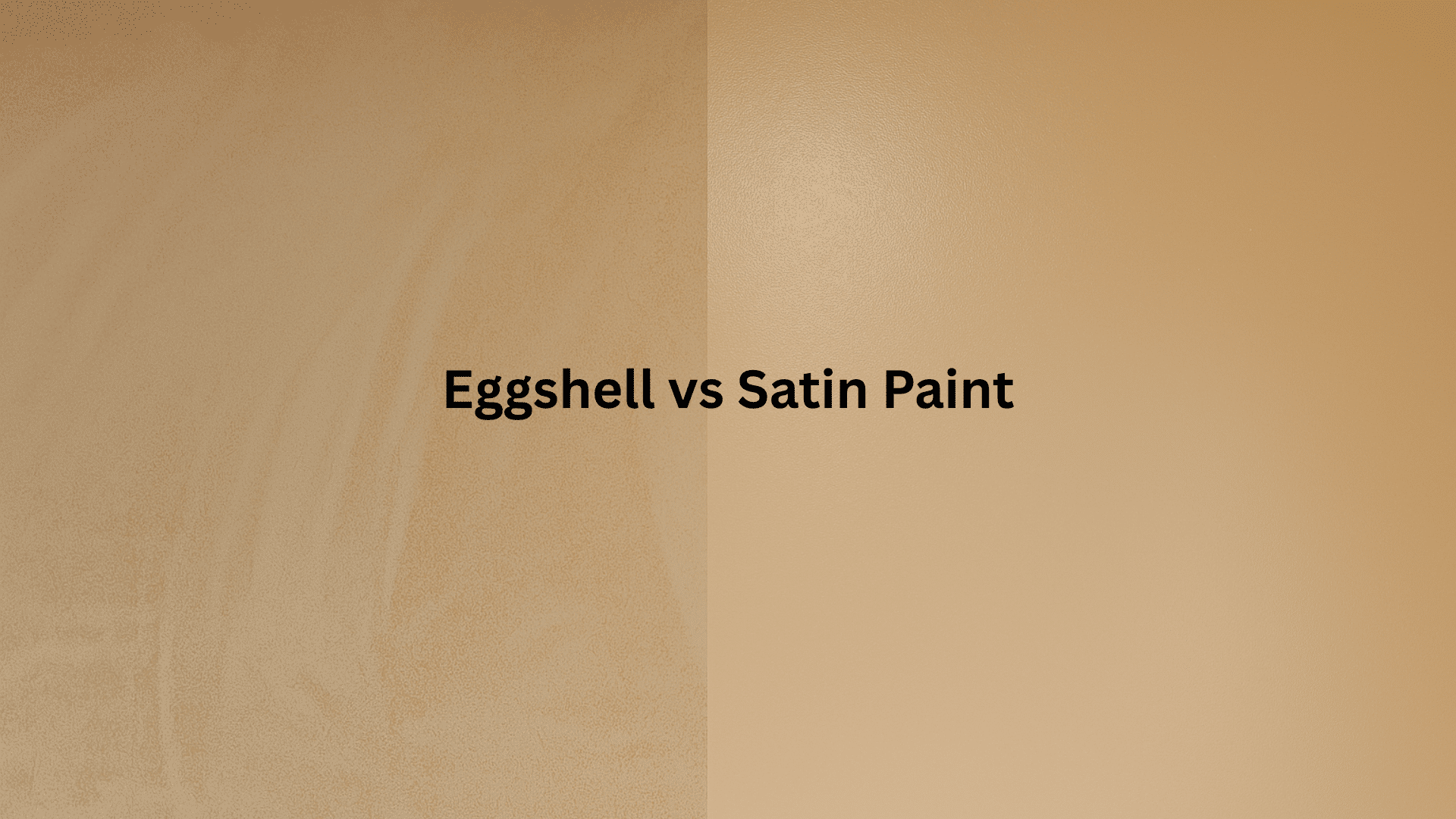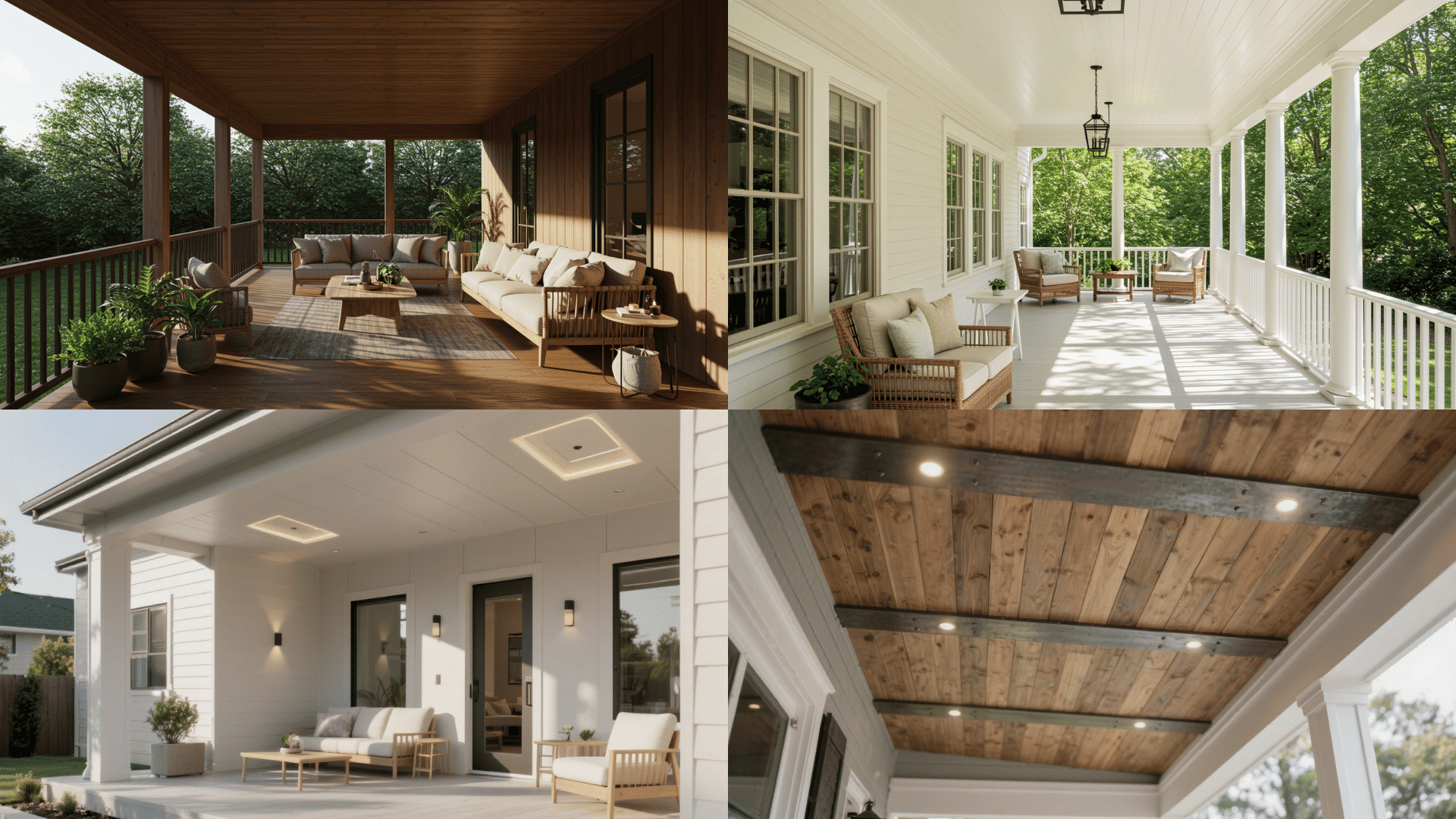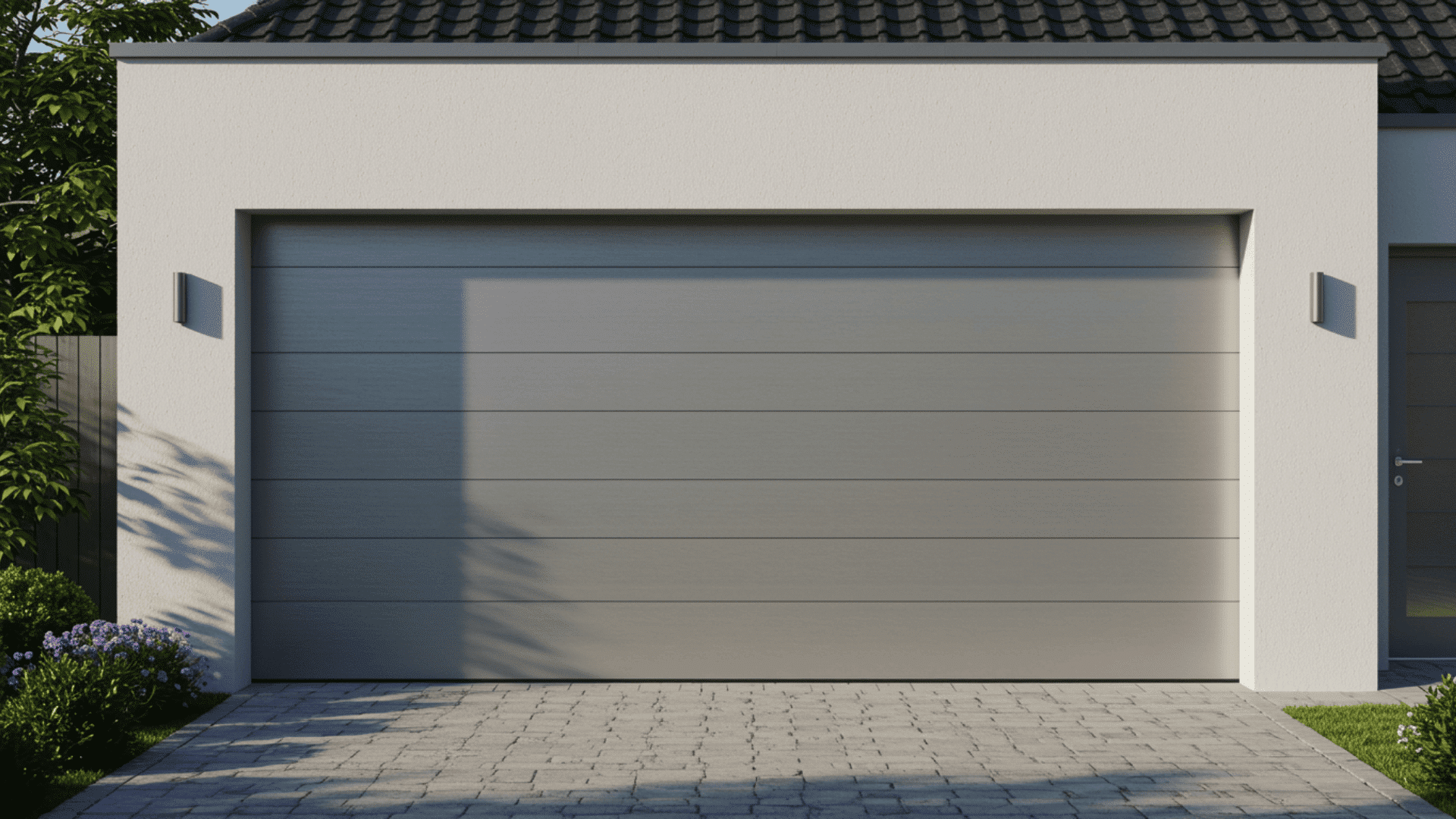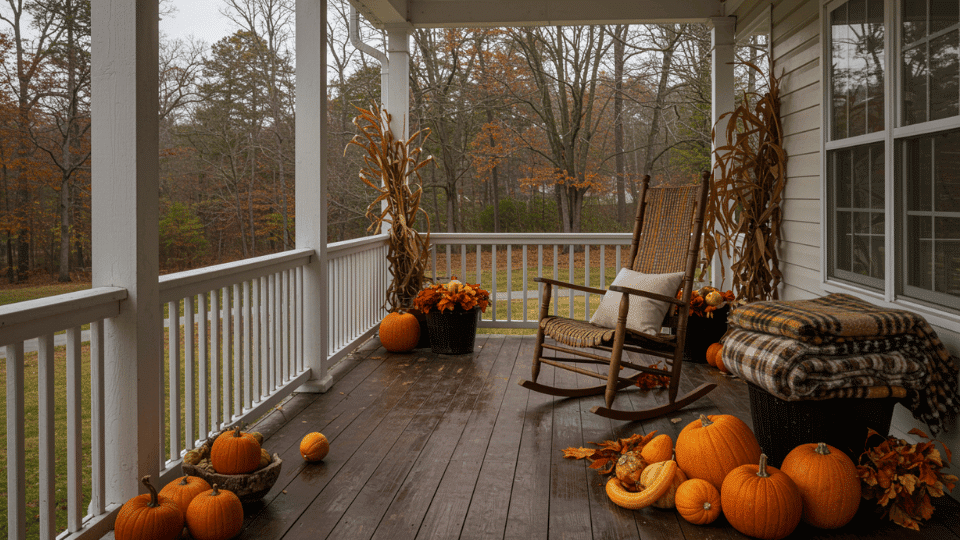Looking at the various types of windows available today, I’ve realized there’s more to them than just glass and frames.
Every style contains secrets to transforming your living space. I have learned that the optimal window design, placement, and functionality effectively manage both summer heat and winter cold.
The real question isn’t about visual appeal alone; it’s about matching function to lifestyle, climate to comfort, and budget to long-term value in ways that actually matter.
Key Factors in Choosing Types of Windows
Selecting the right type of windows involves more than just picking a style you like. Several important factors come into play when deciding which type works best for your home.
- Operation and structure: Each window type has a unique opening mechanism and frame design that defines how it functions in your space
- Light and ventilation needs: Consider how much natural light you want and whether easy airflow is a priority for the room
- Aesthetics vs. functionality: The ideal window combines visual appeal with practical benefits like energy efficiency and insulation
- Placement and purpose: Location matters if you’re highlighting a view, ensuring privacy, or maximizing a specific function
By weighing these factors together, you can choose windows that enhance both comfort and curb appeal. The right combination makes your home more efficient while matching your personal style.
Types of Windows
Knowing the different types of windows available helps you make informed decisions that balance functionality, aesthetics, and energy efficiency for your home.
1. Single-Hung Windows
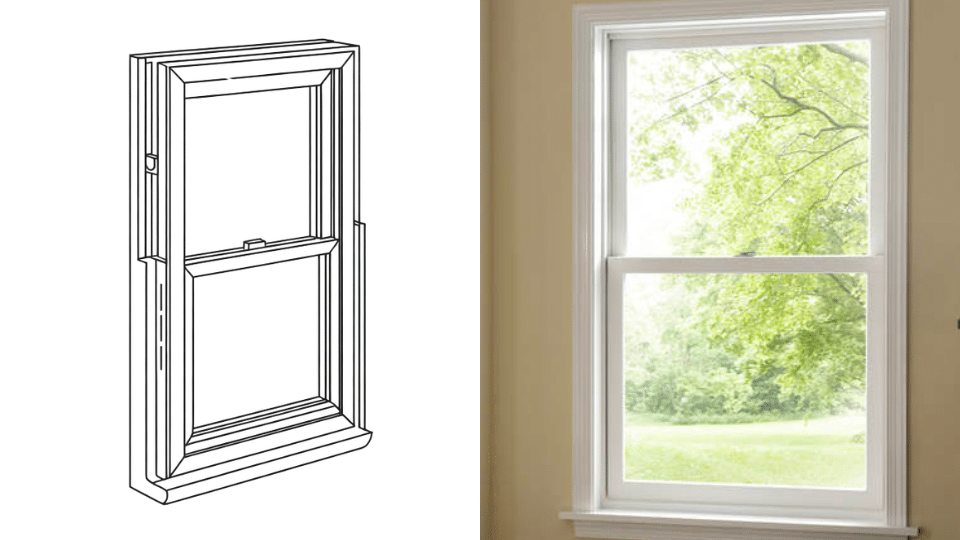
Single-hung windows feature a single movable lower sash, with the upper sash fixed. They cost 20-30% less than double-hung alternatives and work best in bedrooms, living rooms, and traditional-style homes.
Many models include tilt-in features that let you clean the exterior glass from inside, eliminating the need for ladders.
2. Double-Hung Windows

Double-hung windows allow both sashes to move independently, creating versatile ventilation options for any space. Most models include tilt-in sashes that pivot inward for safe cleaning from inside the home.
They’re ideal for bedrooms and bathrooms, where cross-ventilation helps control moisture, and they suit various architectural styles.
3. Casement Windows
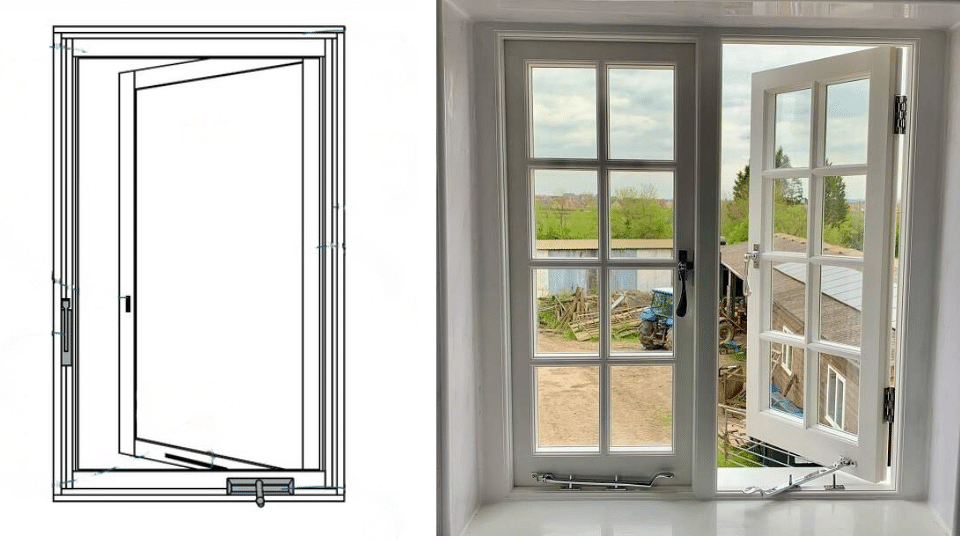
Casement windows swing outward on side-mounted hinges, operated by a crank mechanism for smooth operation. They capture 100% of available airflow when fully opened and deliver superior energy efficiency through compression seals.
Perfect for kitchens, bathrooms, and hard-to-reach areas where crank handles provide easy access for ventilation and light.
4. Awning Windows
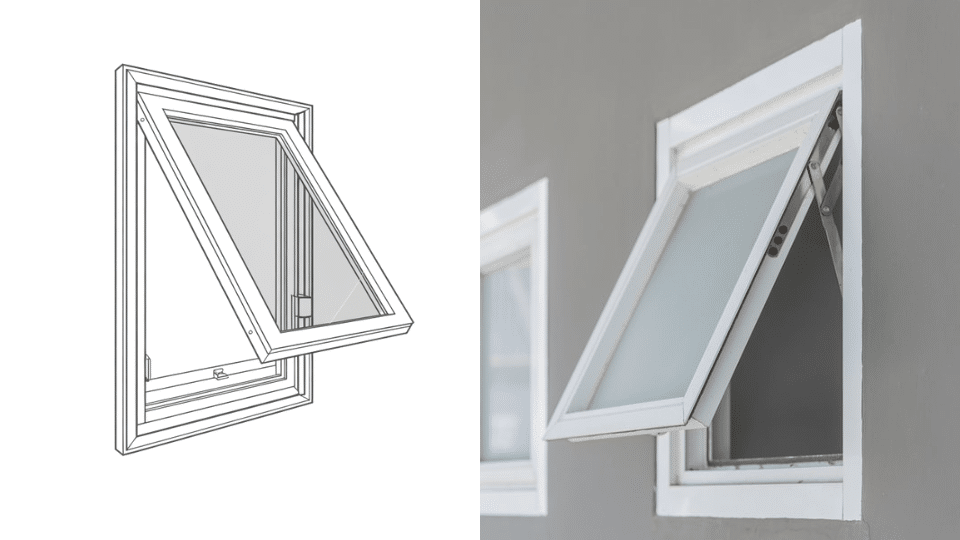
Awning windows attach with top-mounted hinges and open outward from the bottom using crank operators. The outward-angled opening creates a natural rain shield that prevents water from entering while allowing fresh air to circulate.
They work best in bathrooms, basements, and rainy climates, typically measuring 24-48 inches wide and installed above eye level.
5. Sliding Windows
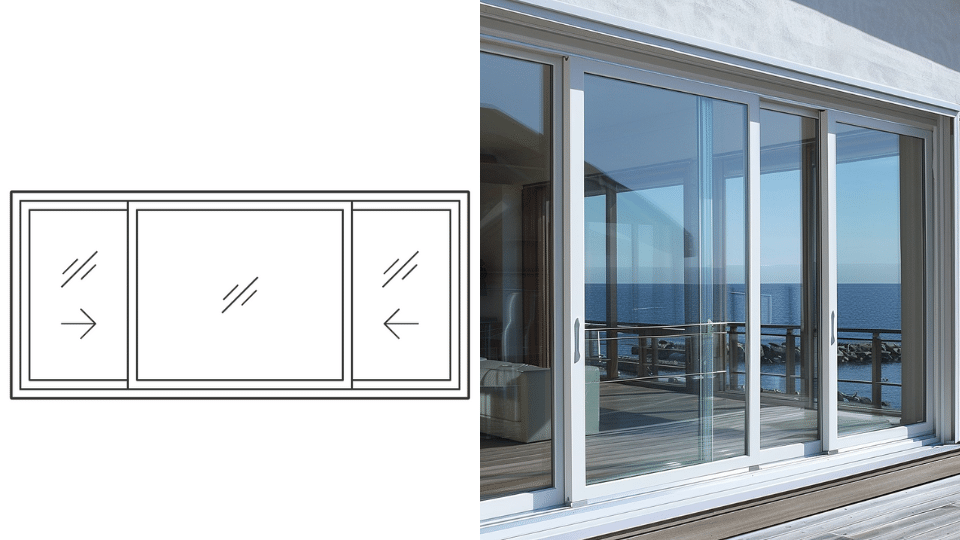
Sliding windows move horizontally along tracks, with one or both sashes able to glide left or right. They suit modern homes, patios, and rooms with wide wall openings where vertical space is limited.
Most models offer 50% maximum ventilation, as only one panel opens at a time, and contemporary profiles complement minimalist architecture.
6. Bay Windows

Bay windows extend outward with three-panel sections, a large center window flanked by angled side panels typically set at 30-40 degrees.
They create focal points in living rooms, dining rooms, and master bedrooms while adding visual square footage. The projection depth typically ranges from 12 to 24 inches, creating interior window seats or display areas.
7. Bow Windows

Bow windows curve outward with four to six equal-sized panels, creating a rounded appearance that differs from the angular appearance of bay windows.
Each panel connects at 10-15-degree angles to form the curve and extends 18-30 inches from the exterior walls. They improve formal living rooms and master suites, requiring substantial structural support, including foundation adjustments.
8. Picture Windows
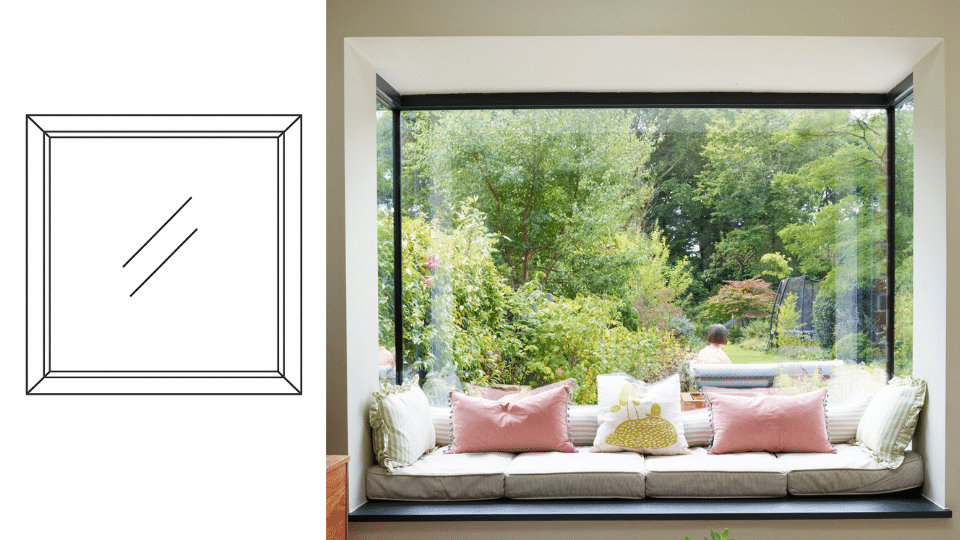
Picture windows are permanently fixed, with no operable components, maximizing unobstructed views of outdoor scenery.
Many windows now feature tilt-in sashes that let you clean both sides of the glass from inside your home, eliminating the hassle and safety risks of using ladders.
9. Garden Windows
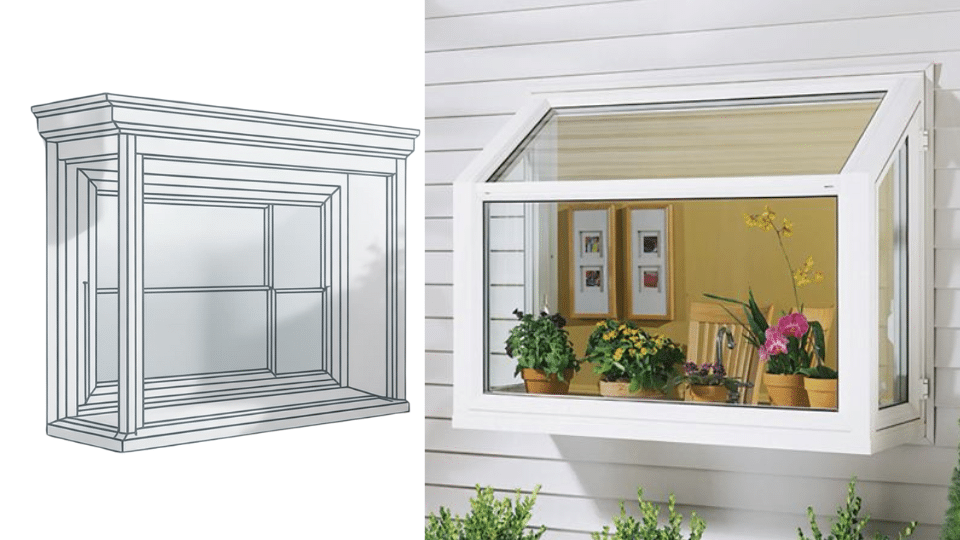
Garden windows project outward like miniature greenhouses with glass on four sides and a glass top. They suit kitchens above sinks and sunny walls where herbs and small plants can thrive year-round.
The typical projection depth measures 12-16 inches with interior shelving for multiple plant levels. Most designs include side casement panels for ventilation.
10. Skylight Windows

Skylight windows are installed in roof planes to channel natural light directly downward into interior spaces. They change dark hallways, bathrooms, attics, and stairwells into brighter areas.
Fixed skylights remain stationary while venting models open via manual poles or electric motors. Standard sizes range from 22×46 inches to 48×48 inches with proper flashing systems.
11. Hopper Windows

Hopper windows hinge at the bottom edge and tilt inward from the top when opened. They excel in basements, bathrooms, and ground-level spaces where limited exterior clearance prevents the use of outward-opening designs.
The inward-tilting mechanism prevents rain from entering and provides secure ventilation. Most measure 24-48 inches wide and are installed in foundation walls or above bathtubs.
12. Transom Windows

Transom windows are narrow panels mounted above doors or windows that add natural light to entryways and high-ceilinged rooms.
Modern designs include rectangular, arched, circular, and custom shapes for decorative variety with fixed or operable mechanisms.
13. Jalousie /Louvered Windows
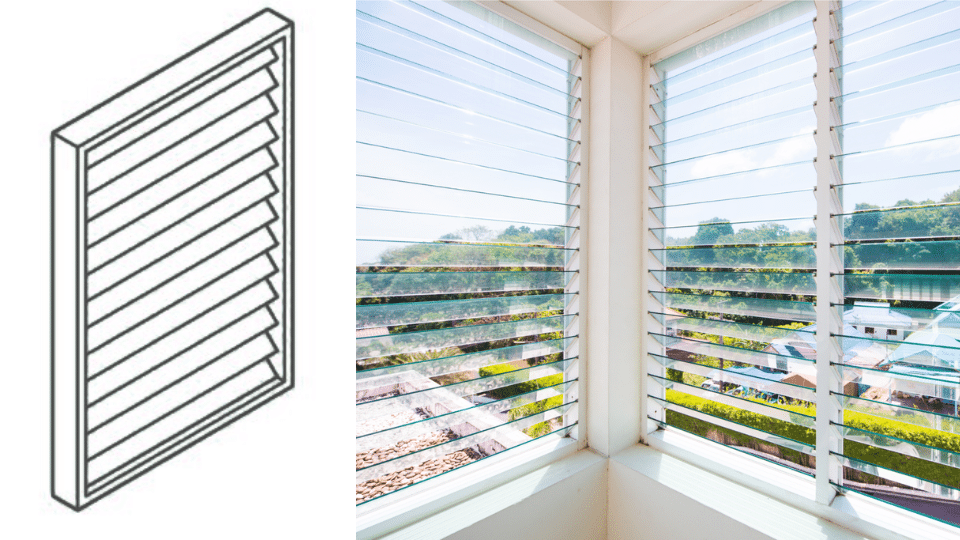
Jalousie windows feature horizontal glass slats that pivot simultaneously with a crank mechanism, opening like venetian blinds. They perform best in screened porches, sunrooms, and tropical climates where maximum airflow matters most.
The overlapping slats allow nearly 100% ventilation when fully opened. Each louver measures 3-6 inches tall but provides minimal weatherproofing and security.
14. Arched Windows
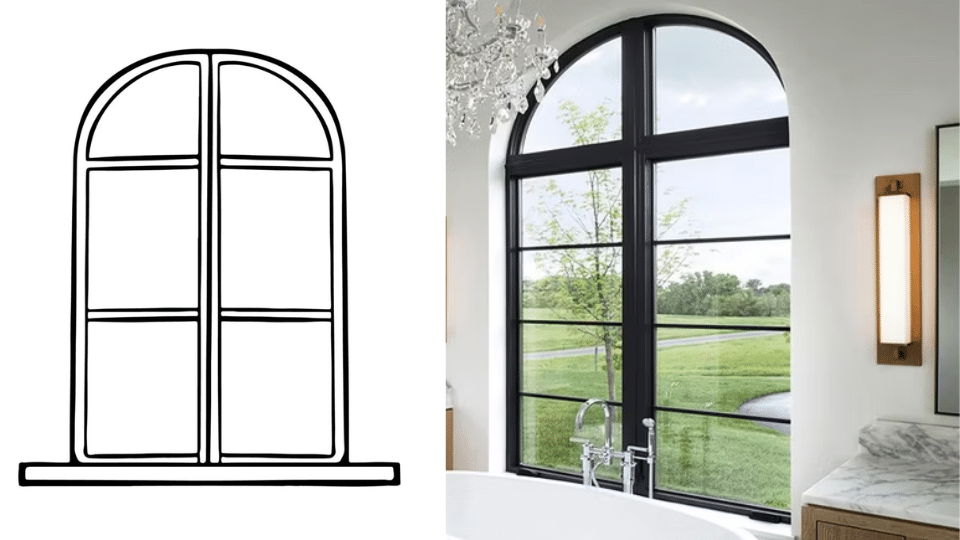
Arched windows feature curved tops in various profiles, including half-circle, eyebrow, and Gothic styles that add architectural character. They create stunning focal points in entryways, great rooms, and churches.
Most remain fixed without operable components since curved sashes complicate mechanical systems.
Custom fabrication accommodates specific radius measurements, often pairing with rectangular windows below for balanced functionality.
15. Tilt and Turn Windows

Tilt and turn windows offer dual functionality through a single handle mechanism, tilt inward from the top for ventilation or swing fully inward like a door.
They suit bedrooms, home offices, and European-inspired designs. The tilt position provides secure ventilation while remaining locked at the bottom. Full-turn mode allows 180-degree opening and simplifies exterior cleaning from inside the home.
16. Fixed Windows

Fixed windows contain no moving parts and serve solely for light transmission and views, without ventilation. They work in stairwells, hallways, and architectural feature walls where operable windows aren’t practical.
The permanent seal creates maximum energy efficiency since mechanical components can’t develop air leaks. They accommodate custom shapes, including triangular, circular, and geometric designs, more easily than operable types.
17. Egress Windows
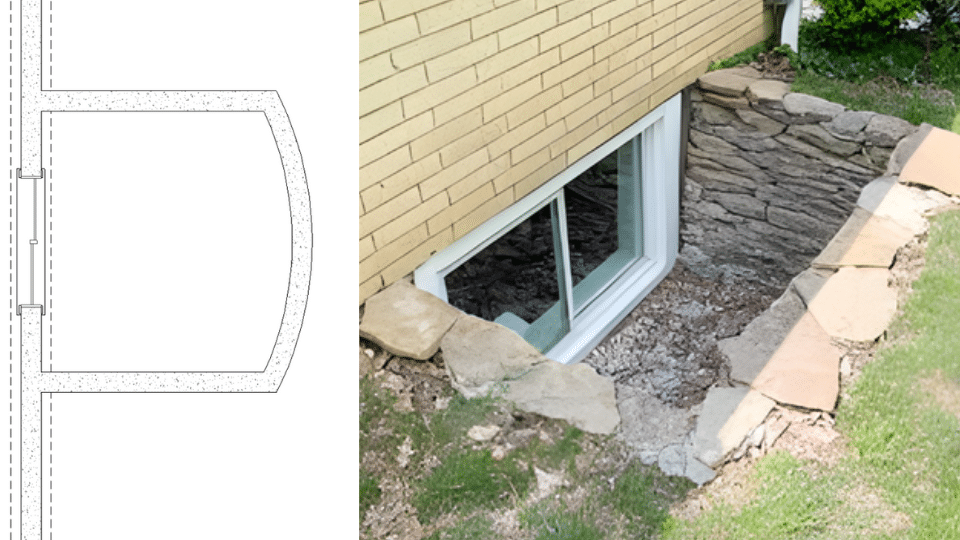
Egress windows meet building code requirements for emergency escape routes with minimum opening dimensions of 5.7 square feet and 24-inch height clearance.
They’re mandatory in bedrooms and basements where occupants need safe exits during emergencies. Most use casement, sliding, or double-hung designs that meet size requirements.
Installation often includes window wells in below-grade applications for proper safety compliance and to increase resale value.
How to Choose the Right Typeof Windows?
Selecting the right windows requires balancing functionality, aesthetics, and budget. Consider these key factors to find the perfect match for your home and climate.
- Room purpose: Bathrooms need moisture control and privacy, while living spaces should prioritize natural light and expansive views.
- Architectural style: Traditional homes pair well with double-hung windows, while modern spaces benefit from sleek sliding or casement designs.
- Climate needs: Hot regions require energy-efficient casement windows for ventilation, while rainy areas need awning windows for weather-protected airflow.
- Budget and energy performance: Evaluate costs alongside energy-efficiency features such as quality seals and advanced glazing to reduce long-term utility expenses.
- Maintenance requirements: Choose windows with tilt-in features for easier cleaning and better accessibility.
The right window choice enhances comfort, reduces energy costs, and complements your home’s design. Take time to assess your priorities before making a final decision.
Wrapping It Up
Different types of windows offer various benefits based on your home’s needs and climate. Each style serves a specific purpose, from ventilation to energy efficiency.
Before you decide, I recommend comparing features and costs from different manufacturers. Think about energy savings, maintenance needs, and how much natural light you want. Consider your budget and long-term goals.
If you’re ready to upgrade, start by identifying your top priorities. The right windows improve comfort and reduce energy bills for years to come.
Ready to find your perfect windows?

